
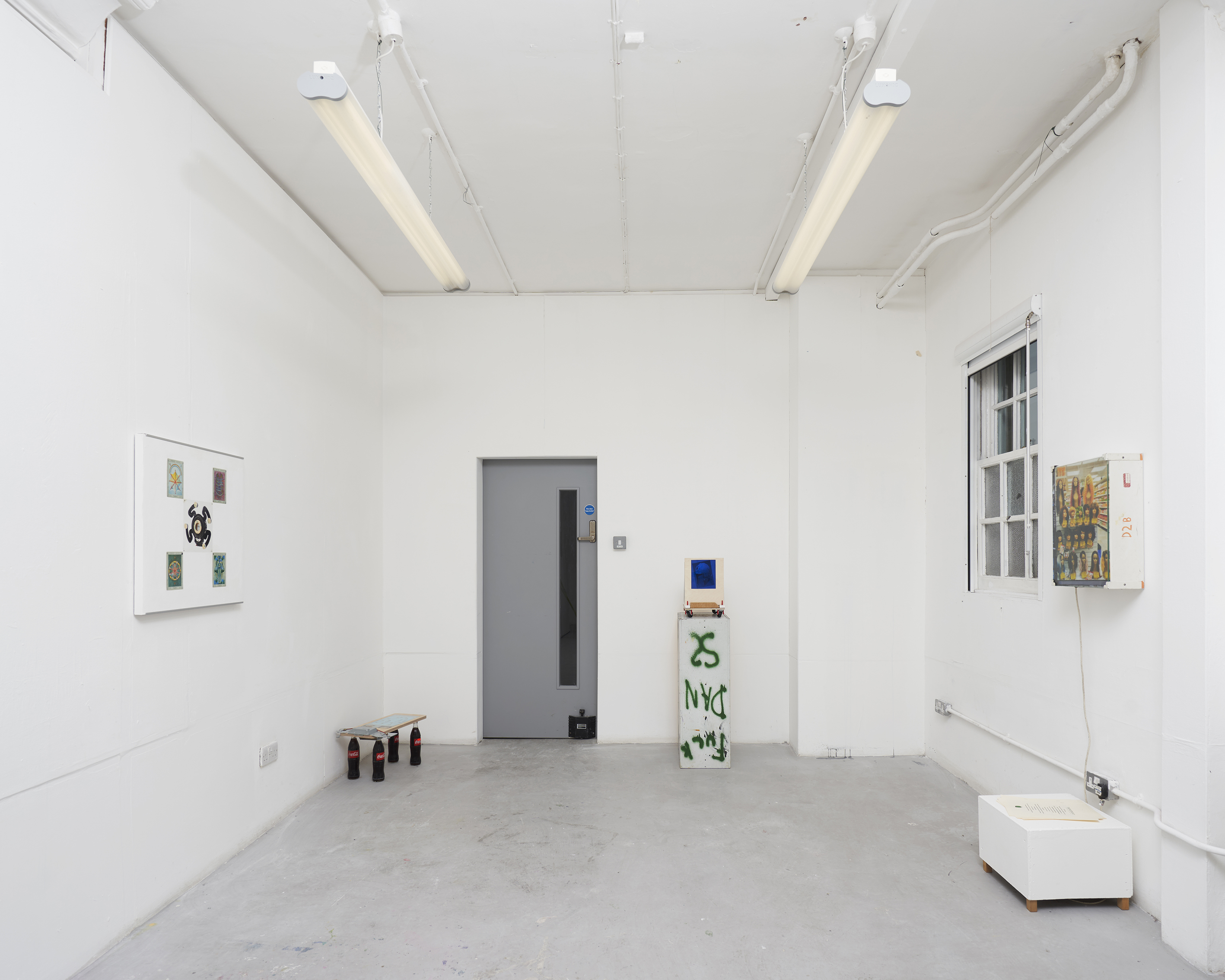
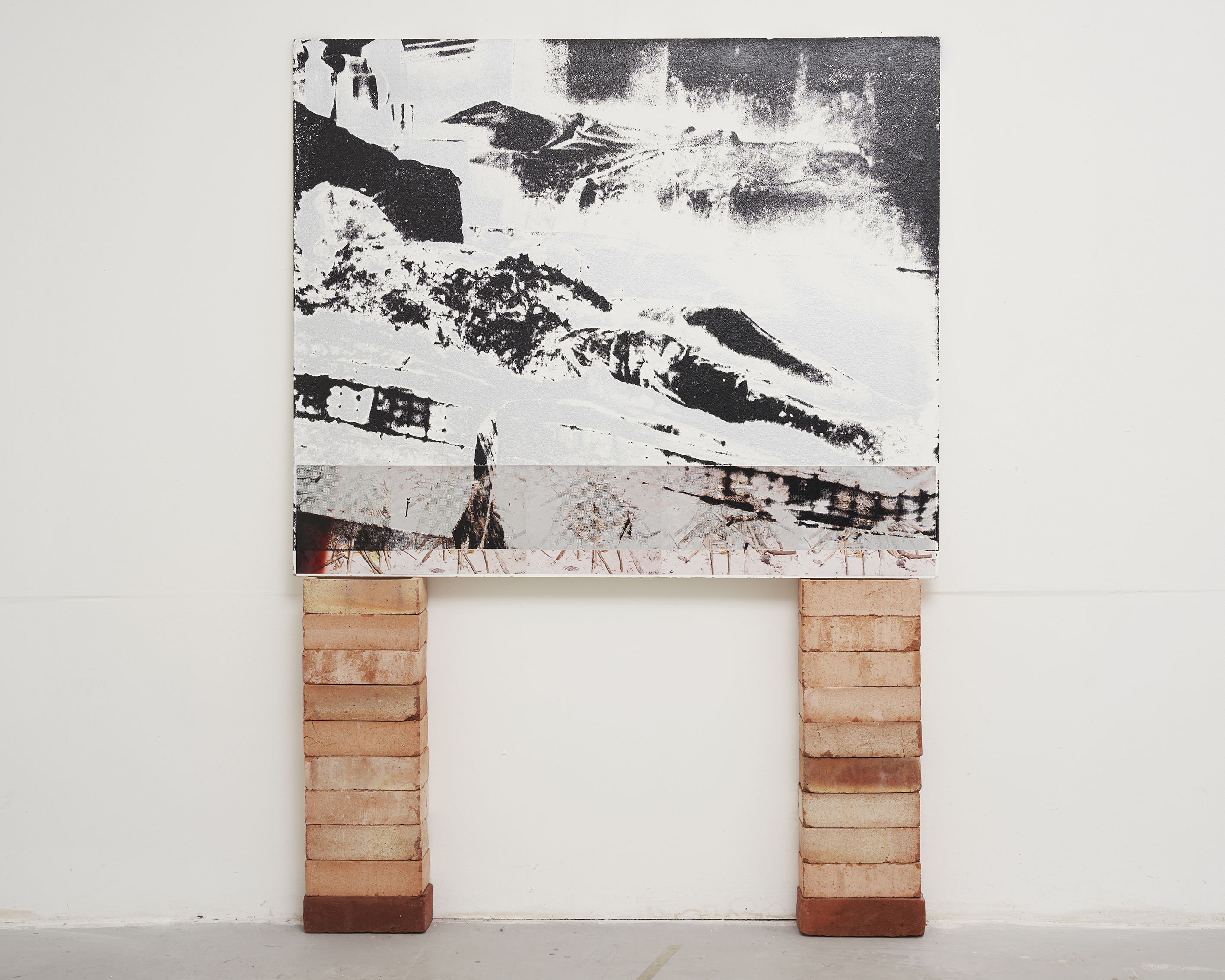


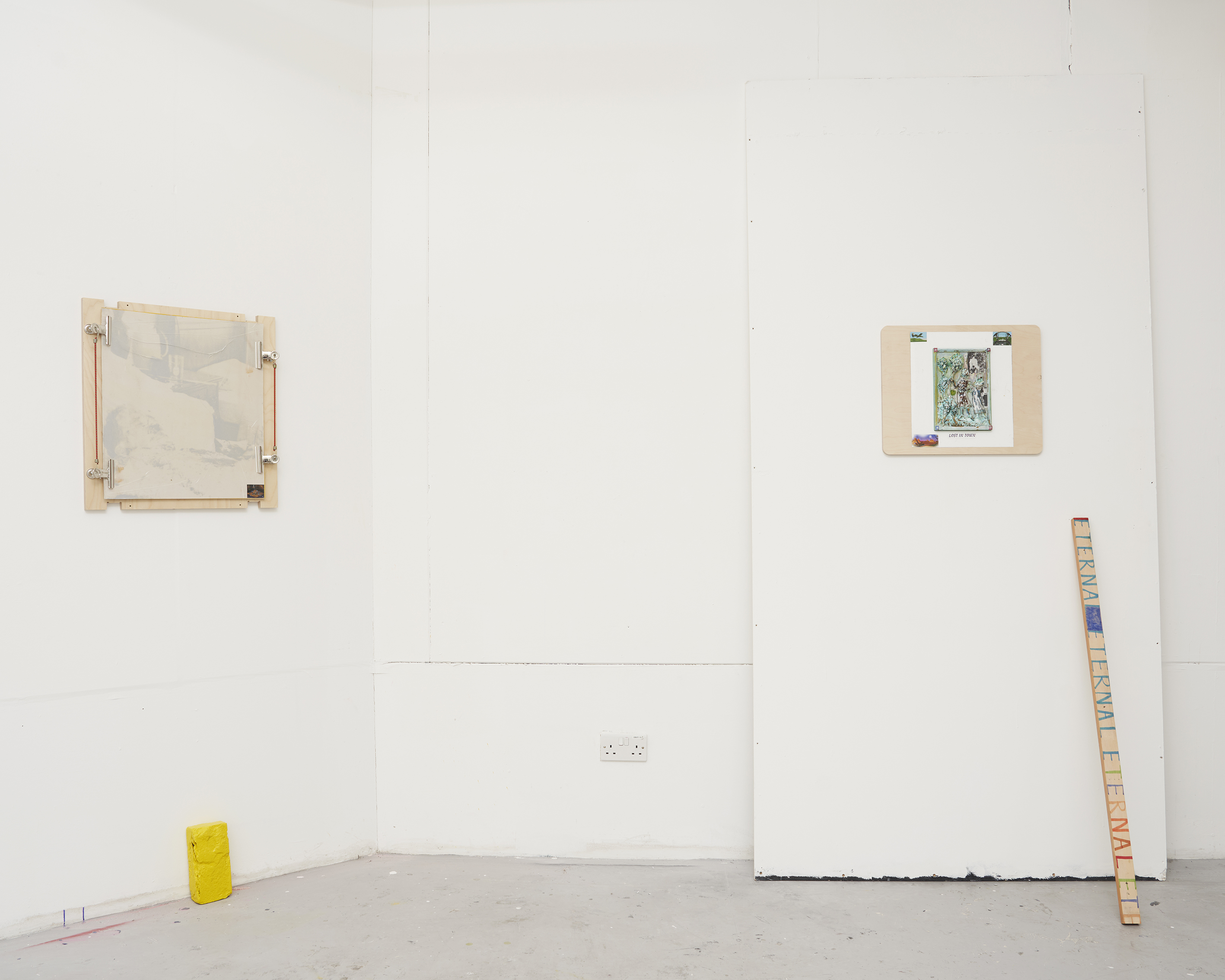

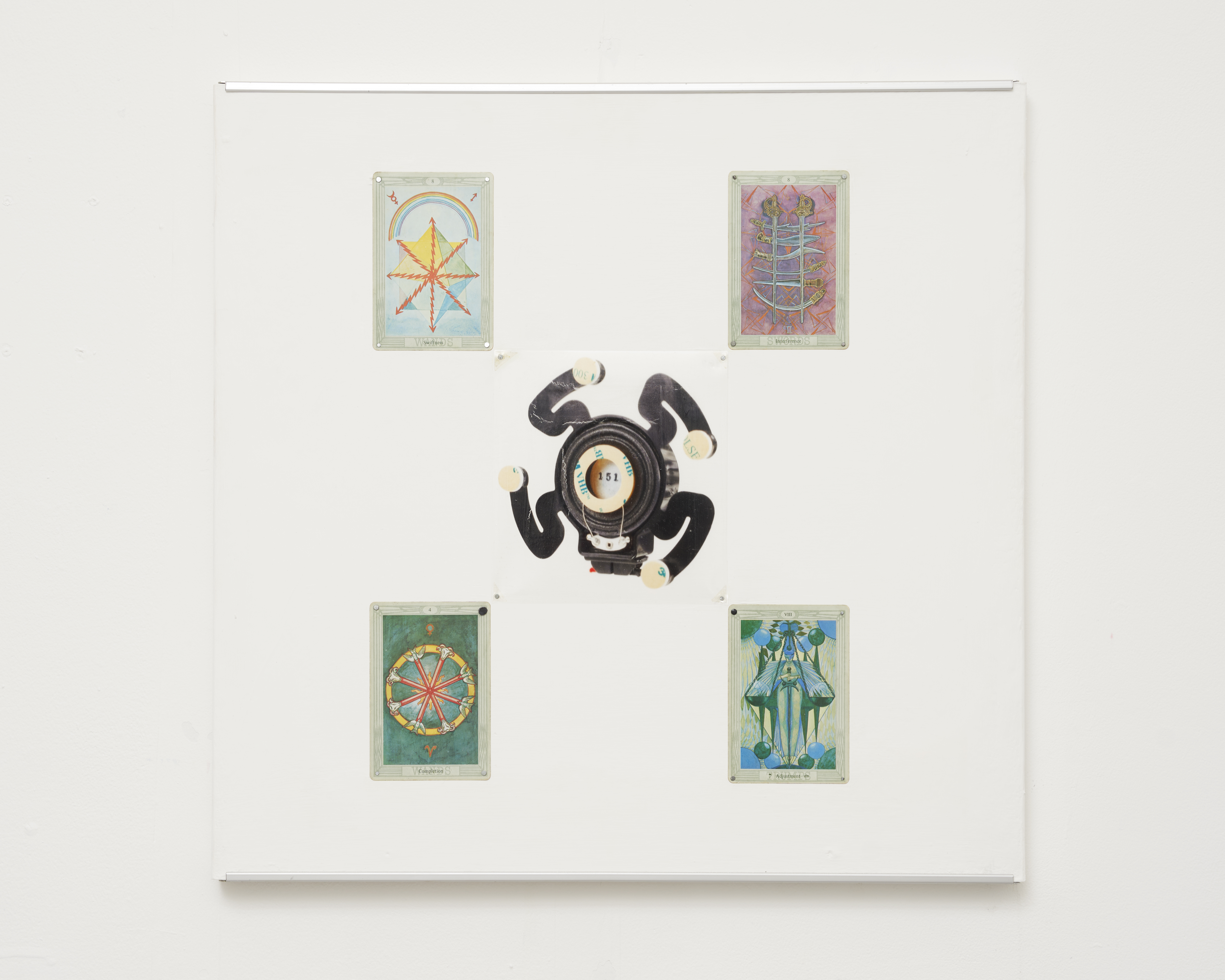
![Sequencing plug [I wanna be your dog], 2022. (Transparencies, insulation tape, glass tile, aluminium, ply & x4 imported Coke bottles)](https://freight.cargo.site/t/original/i/0d23b896af184f4ac16319760b199ca2212cacc6449ec32b16ed6166be3bf9bb/Jake0065_1.jpg)
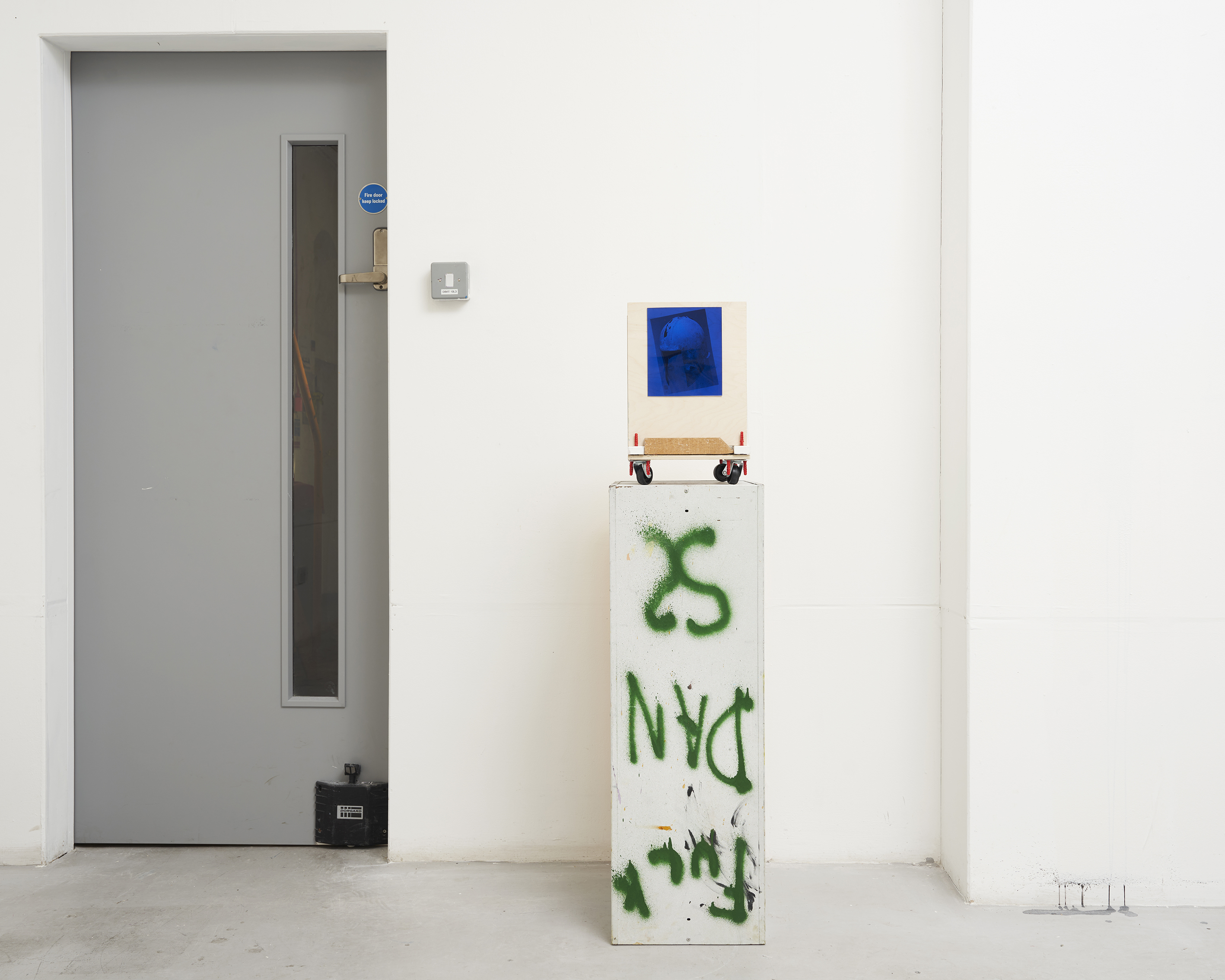
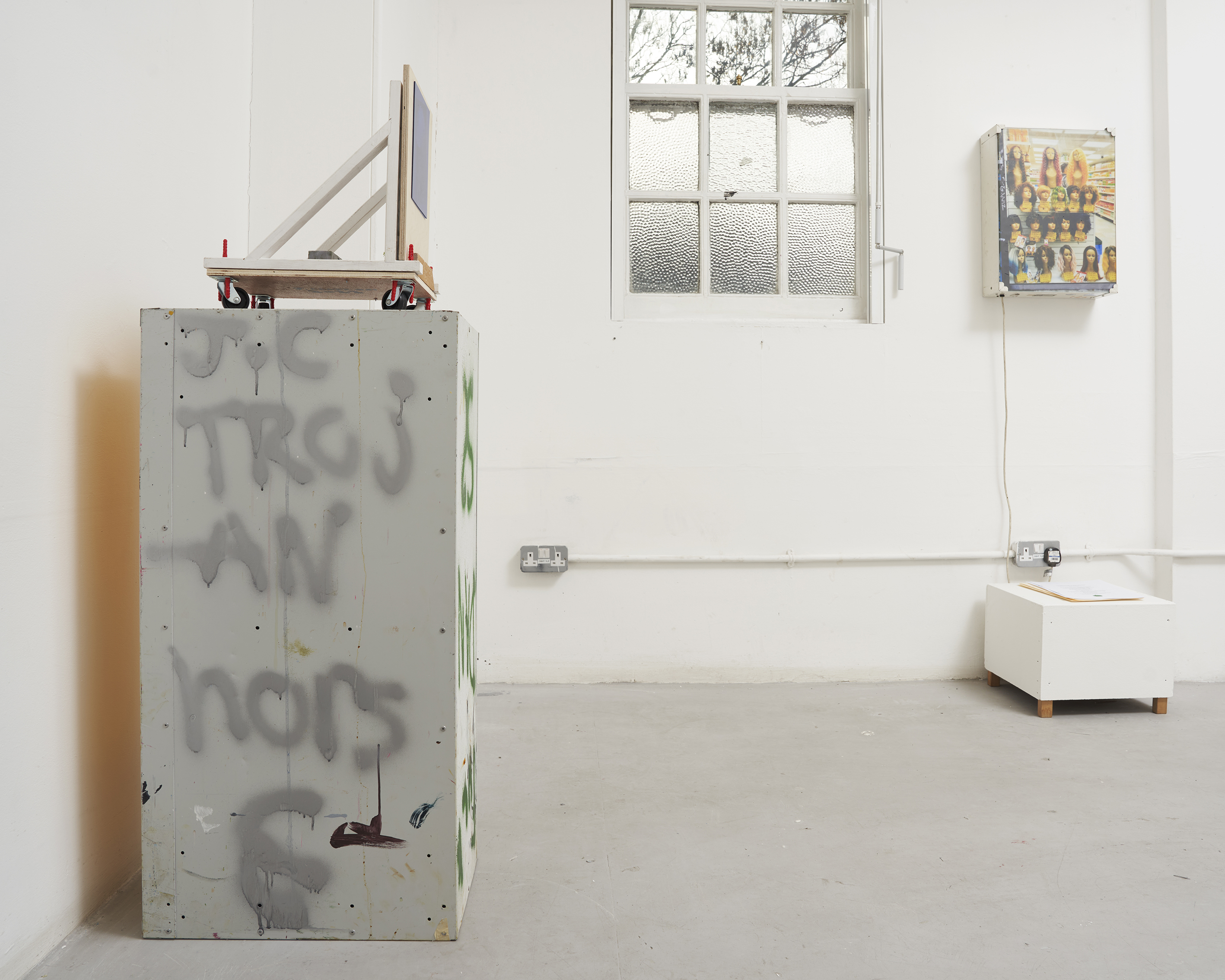


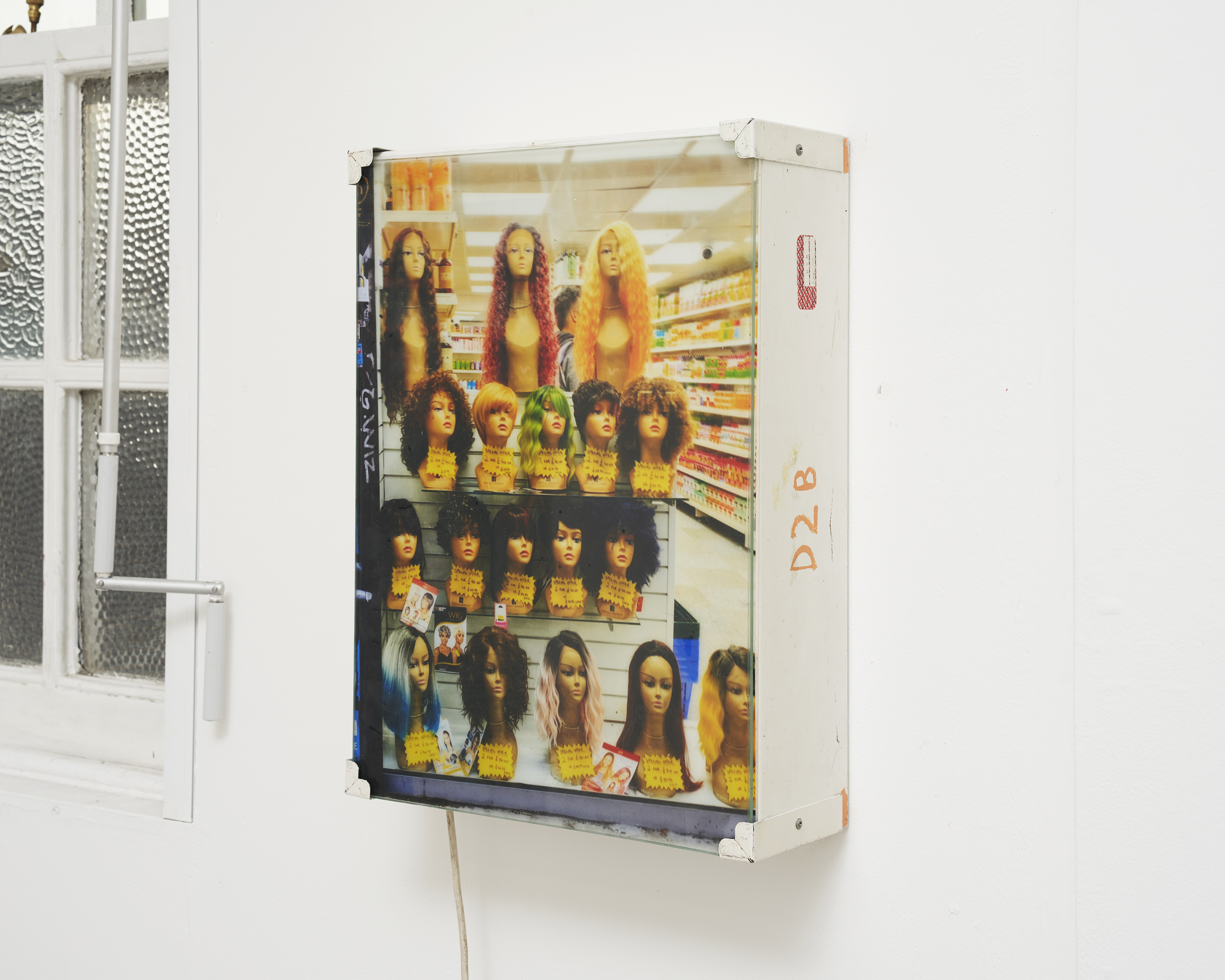
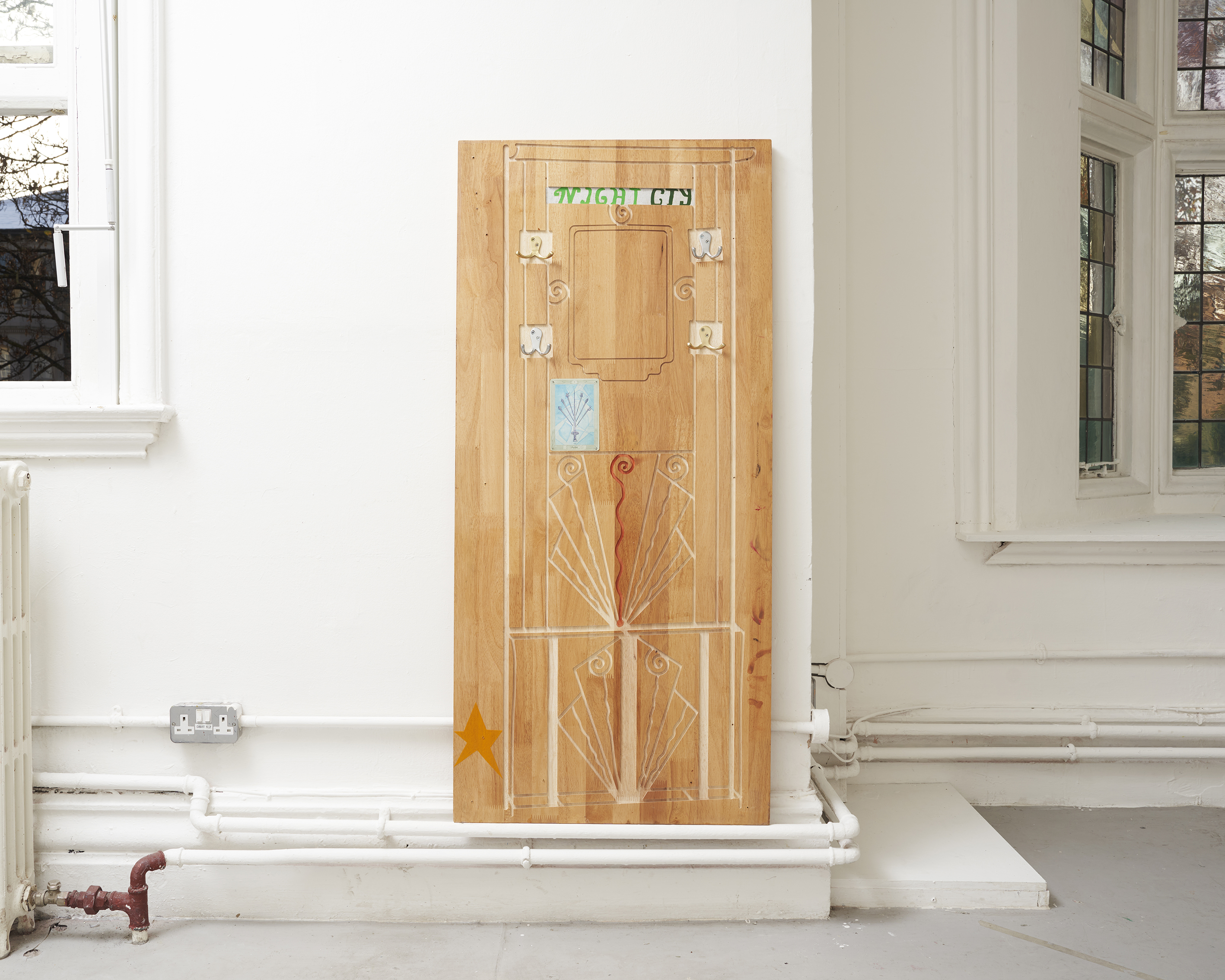



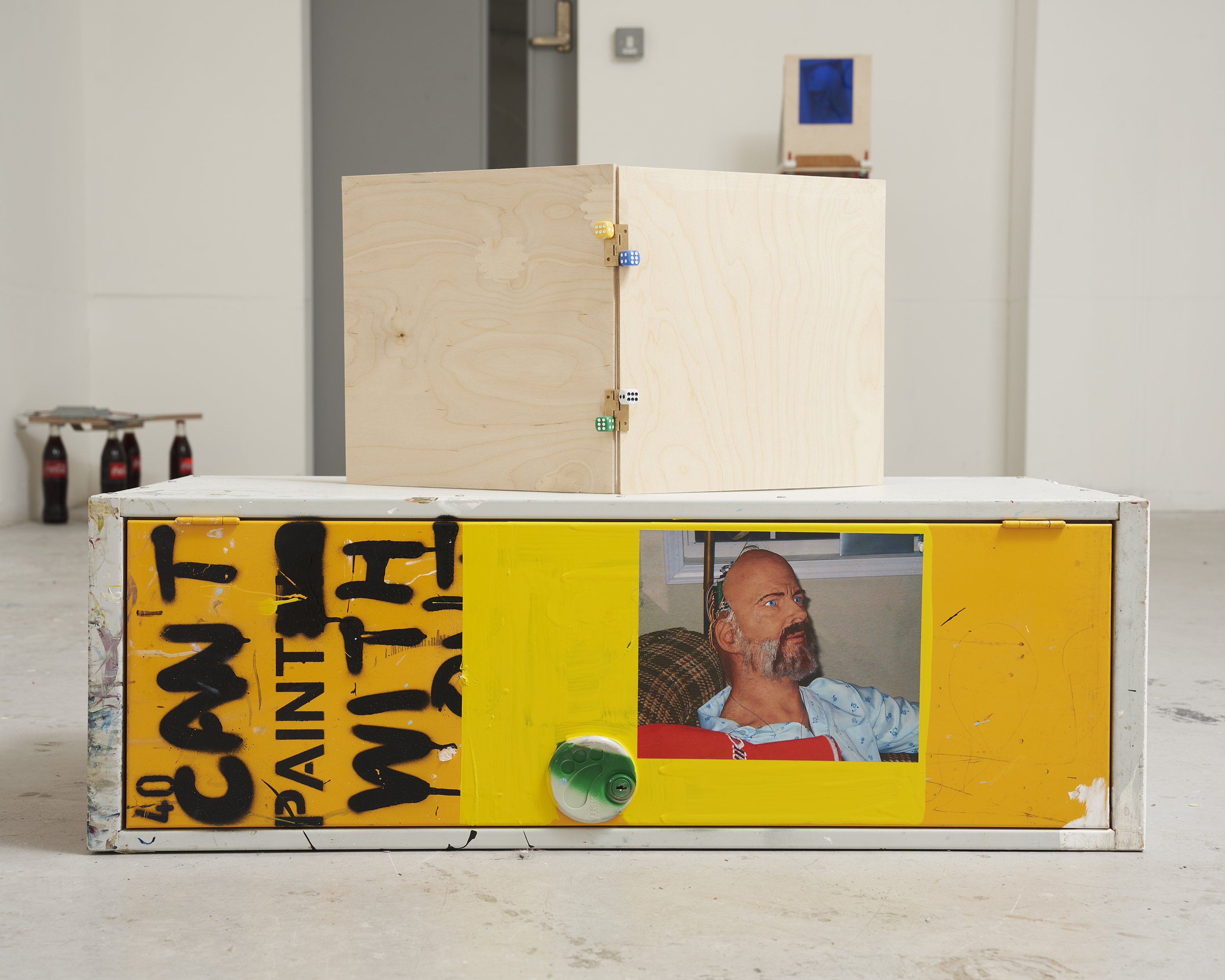
Departure lounge
Ophelia scanned at the airport - traveling between worlds
Energy short circuit or something gets caught
And like a virus, the machine fuses with her pituitary gland
Like Jeff Goldblum and the fly in ‘the fly’.
She visions car crashes, simulated collisions
The home comes into question
What it means to build worlds
Destroy worlds
Growth, metabolism, reproduction - filtering through new impositions.
She floats next to herself and she can see that she is a technology
Primitive and futuristic
She cries and she laughs
She can experience the present now, only as a by-proxy frequency
Between fantasies of the past and the future.
The machine is the world / Ophelia turns into a camera is an installation of 13 works & an accompanying soundscape, which follow a trajectory of research that regards the poetics and literary structures of New-wave Science Fiction literature as providing possible inroads into speculative processes and functions of visual art. The synthesis of these works came about as research expands into a collection of additional esoteric knowledges. These include interpretations of the Marseille Tarot, magic ritual, the code written physics & architectures of 90’s computer games and re-occurring spiritual/ theological threads.
Referencing John Everett Millais’ depiction of ‘Ophelia’ (1851-52) in which Shakespeare’s fictional heroine is superimposed into a ‘real-world’ landscape, The machine is the world […] communicates with the material everyday through a gauze of fantasy, philosophy, and spirituality. Physical data is collected as an extension of the photographic process, materials taken from the terrestrial realms of charity shops, auction catalogues, neighbours’ bins, and discount supermarkets. These remain held as future players, unborn until periods of intuition in which they are re-worked and assembled like transverse waves in a body of water, rippling from points of impact.
There is a concentration here on loss/ gain within translation and information processing. Works facilitate confrontation between the object, the photographic image, the written word, painting, and print-making. Employing devices that have become synonymous with problems of selection in face of the infinite, the present becomes visible as a battle-field between the empirical and cognitive realms. “Primitive and futuristic, she cries and she laughs”... through their repective vessels, fantasies of the past and the future collide in a process of speculative world-building that treats Assemblage practice as a psychic companion & potent fiction between the self (“The Wand/ to know”) and the other (“The Cup/ to want”).
References:
Ursula K. Le Guin: The Carrier Bag Theory of Fiction (1986), Darko Suvin: Metamorphosis of Science Fiction (2016) / Philip K. Dick: Ubik (1969), The Simulacra (1964), Valis (1981) / Samuel Delaney: Babel-17 (1966), Nova (1968) / J.G Ballard: Crash (1973) / William Gibson: The Sprawl Trilogy (1984, 1986, 1988) / Alejandro Jodorowsky and Marianne Costa: The Way of Tarot (2004) / Valve corporation: (Video-game transcripts) Half-life (1998), Half-life 2 (2004)